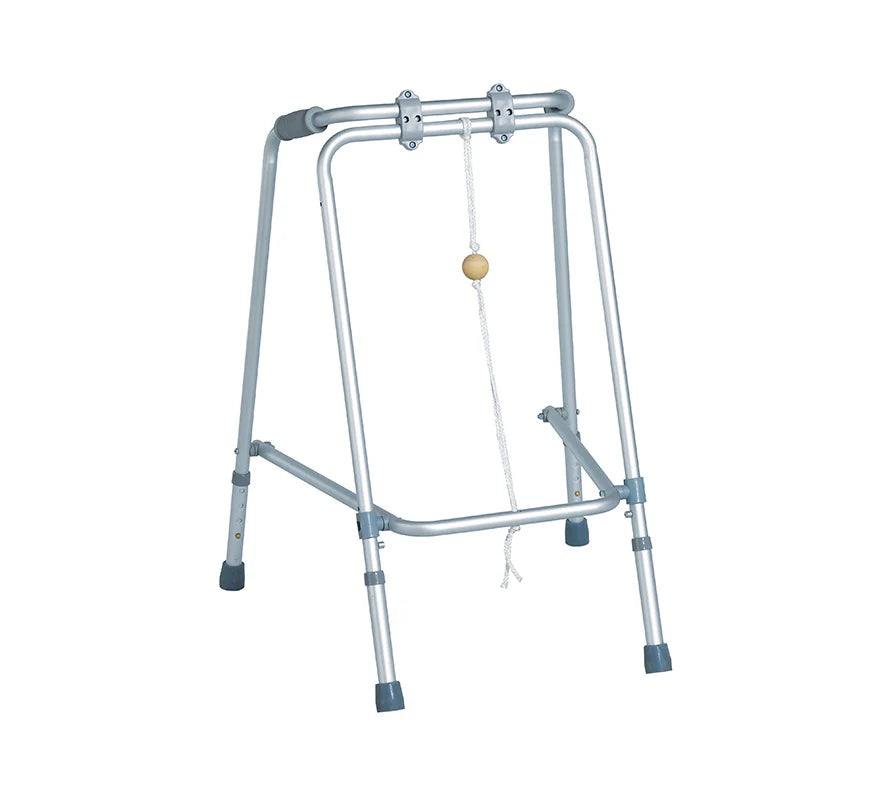
Walker (Rollator) Buyers Guide
If you are looking to buy a walker (also known as a Zimmer frame, walking frame, gutter frame or a rollator), there are several important factors to consider to ensure you choose the right walking frame for your needs or the needs of a loved one.
This guide will walk you through why you may need a walker, key factors to consider before purchasing, different models available, additional considerations like size and weight, and funding options in New Zealand.
Why do I need a Walker?
A walker or rollator can provide stability and support for individuals who:
-
Have difficulty walking due to balance issues, muscle weakness, or fatigue
-
Are recovering from surgery, an injury, or a stroke
-
Experience age-related mobility challenges
-
Need help walking safely over long distances or uneven surfaces

Using the right walking frame can reduce the risk of falls, increase independence, and enhance overall mobility. And with these improvements – life improves!
View the full range of walkers & rollators that Auckland Independent Living stores and our website have here – www.ilsnz.org/collections/walkers-rollators
What are the Main Purchase Considerations?
1. Intended Use
-
Indoor vs. outdoor use: Some walkers are designed for smooth indoor floor surfaces, are small in size and easily maneuvered in small spaces, while other rollators have larger wheels for outdoor terrain and a larger footprint for more stable use.
-
Distance and frequency of use: If using a walker often, comfort and durability are important, with a padded seat and a storage bag for ease of carrying goods.
2. User’s Physical Condition
-
Balance & stability needs: Does the user need maximum support or just light assistance?
-
Endurance & Fatigue concerns: Do they need a padded seat to rest on? Are armrest supports helpful with staying upright for longer periods while walking?
-
Upper body strength: Some walking frames require lifting to move, while rollators (walkers with wheels) glide easily.
-
Hand grip strength: Check if the handles are easy to hold and comfortable to grip with both hands, and if the brakes are easily applied and can lock/unlock.
3. Weight Capacity
Ensure the walker can safely support the user’s weight. There are heavy-duty models available for individuals needing extra strengthened support of the frame.


The Titan can support up to 200kg The Wellsford extra wide walker
4. Transport & Storage
-
Portability: Some mobility walkers are lightweight or foldable for transport in a car.
-
Storage space: Consider where the walking aid will be stored when not in use.
5. Adjustability & Comfort
Look for:
-
Height-adjustable handles to ensure proper posture
-
Padded hand grips for comfort
-
Seat & backrest (on rollators) for resting when needed
-
Brakes that offer ergonomic comfort to hold and provides a secure grip
-
Accessories that enhance usability and convenience
-
Maneuverability through swivel wheels or front castors
-
Width between the rear wheels that suits the individual’s gait
6. Budget
Prices vary depending on the type of walker and features. Determine a budget that balances affordability, durability, and comfort.

What are the Options?
There are several types of walking frames available, each designed for different needs:

1. Standard Walkers (Zimmer Frames)
-
No wheels, requires lifting to move
-
Best for maximum support and stability
-
Suitable for indoor use on flat surfaces
2. Wheeled Walkers (Front-Wheeled Walking Frames)

-
Two wheels in front, rubber tips in back
-
Provides more mobility than a standard walker
-
Best for users who need stability but don’t want to fully lift the frame
3. Rollators (4-Wheel Walkers)
-
Four wheels, brakes, and often a seat
-
Best for individuals who walk but need occasional support and a place to rest
-
More manoeuvrable but requires good hand control to operate brakes
4. Knee Walkers (Knee Scooters)
-
Used for lower leg injuries as an alternative to crutches
-
Allows the user to rest one leg while propelling forward with the other
5. Bariatric (Heavy-Duty) Walkers

-
Designed for individuals over 120 kg, many can support weights up to 180kg
-
Wider walking frame and reinforced design for added stability
6. Walker / Wheelchair combination
-
Option for someone who does not need a wheelchair full time, preferring to walk with assistance whenever possible or practical
-
Utilize as a walker and easily switch to a wheelchair by adjusting leg-rests, flipping the backrest for support, and raising the arm handles.
-
Easily transported, as it folds into a compact and transportable size


Key Differences between Walker Types
Use the scroll bar at bottom of table to navigate.
|
Feature |
Standard Walker |
Wheeled Walker (front wheeled walker) |
Rollator (4-Wheel Walker) |
Knee Walker |
|
Support Level |
Maximum support |
Moderate support |
Light support |
Leg support only |
|
Maneuverability |
Least maneuverable |
Medium |
Highly maneuverable |
Medium |
|
Brakes |
No brakes |
No brakes |
Hand brakes |
Hand brakes |
|
Portability |
Foldable |
Foldable |
Foldable but bulkier |
Compact |
|
Best for |
Indoor use, slow movement |
Indoors & smooth outdoor surfaces |
Active users, outdoor use |
Lower leg injuries |
Use the scroll bar at bottom of table to navigate.


Other Considerations
1. Maneuverability
-
Small spaces? A narrow walker is best for tight hallways and limited floor space for turning, and slimmer sized people with a narrower gait.
-
Outdoor use? A rollator with larger wheels provides better stability on uneven ground and rolls over small obstacles that might jam smaller sized wheels.
2. Size & Weight
-
User’s height and weight: Ensure the walking frame fits comfortably.
-
Weight of the walker: Lightweight walkers are easier to lift and transport. Be aware, however, that some lighter walking frames are less robust and not always as stable. Carbon walkers combine lightweight and strength.
3. Accessories
Popular add-ons include:
-
Storage baskets for carrying personal items
-
Padded seats and backrests (for rollators)
-
Cup holders, trays, or walking stick holders
-
Handgrips for extra comfort

Can I get Funding?
In New Zealand, funding assistance for walkers may be available through:
1. Ministry of Social Development (MSD)
-
Covers walkers for eligible individuals with long-term disabilities.
2. Accident Compensation Corporation (ACC)
-
Provides support if the need for a walker results from an injury.
3. Work and Income New Zealand (WINZ)
-
May offer financial aid for those who qualify under disability or medical grounds.
4. Charities & Community Organizations
-
Groups like the Cerebral Palsy Society and local disability organizations may provide grants or financial assistance.
For more information, visit: www.msd.govt.nz/documents/what-we-can-do/community/carers/a-guide-for-carers.pdf
Final Thoughts
There are many walking frames for sale, and at a wide price range, so choosing the right walker or rollator is essential for maintaining stability, independence, and safety. By considering your needs, budget, and capabilities, you can find a walker that enhances your quality of life.
Here is Independent Living’s wide selection: https://ilsnz.org/collections/walkers-rollators
Walkers and rollators must be fitted for the user (height, weight etc) and for main uses (indoor, outdoor, shopping), so ensure you get expert help when selecting a mobility walker.
If you are unsure which mobility aid to buy, consult a healthcare professional or mobility specialist, like Independent Living, for personalised advice and fitting.
We're here to help
Whether you need help determining the best walker products for you or maybe help with finding and understanding the process of a funding application – we're here to help, with impartial and free advice. We have a huge range of products to assist with walking independence at all price ranges: https://ilsnz.org/collections/
Simply visit one of our stores www.ilsnz.org/pages/contact or call us on 0800 625 100.
Our stores are open:
Monday-Friday: 9am to 5pm
Saturday: 9am to 4pm
And if you would like a professional UV treated cleaning service to Hospital grade, check out our Equipment Cleaning service: https://ilsnz.org/pages/equipment-cleaning
